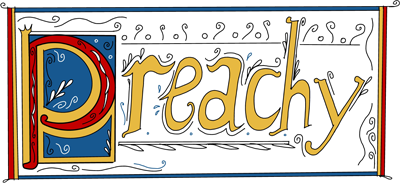
Religion Is Becoming More Accessible. Here’s How.
“When you meet with faith leaders, everyday citizens and see the work that is needed — and is being done — it helps you understand belief systems and how they impact everyday lives,” says Eliana Abdo, project manager at interfaith women’s organization Nisa Nashim. Abdo also shares how recently a public pool dispute in the U.K. became a turning point for understanding diversity within the community that used it. Due to the large Muslim population in the area, the borough council approved a request to have a few slots for only women, but many non-Muslims took offense to the issue. What followed was an interesting conversation between a Muslim woman and a non-Muslim woman who opposed the introduction of segregated slots. When asked if she would prefer a male gynecologist, the woman who opposed the change said she did not, to which the Muslim woman responded by explaining that by allowing Muslim women the choice to swim in a setting they were more comfortable with, the council wasn’t advocating for backward thinking or oppressive laws. Rather, they were simply accommodating more choice. “The fact that this one conversation changed the previously opposing women’s stance completely shows how important it is to get out there and get to know each other. Knowledge is not always textbook,” says Abdo.
The immediate reaction of the community members in falling back on what they believed was right is one that I am all too familiar with. I grew up in a Muslim-majority community, and I found myself relying on mainly my local imams and the fatwas or verdicts they give out. While my reliance on them has decreased significantly, I can’t seem to fully distance myself from them and I’m not sure if I should. That in itself is nothing new: These figures have earned communal respect as teachers and learned figures in the communities they serve, a fact that also gives them great power. But how quickly — and, perhaps more to the point, unquestioningly — we accept answers from anyone who poses themselves as a scholar. As the age of social media makes the world smaller and allows information to be consumed at a much faster rate, our collective dependency on a limited class of religious authorities feels particularly outdated. And as 45 percent of teenagers in the United States express a belief that there is truth to be found in multiple religions, even when a majority of the same age group subscribes to the same religious belief system as their parents, a shift is coming.
Modern day scholars and academics such as Maryam Amir, one of a growing number of religious scholars trying to make information as accessible and easy to understand as possible, actively engage with political and human rights discourse through a religious lens. Over the last year, Amir has spoken out multiple times about the Black Lives Matter movement and the disturbing amount of anti-Black sentiment often found within Arab and Asian Muslim communities. This approach isn’t necessarily new — as seen in Black Liberation Theology and the U.S. Civil Rights Movement — but the fact is that seeing religious leaders undertake such conversations is still rarer than one would expect. Conversations around social justice, change, and lived experiences connecting to religion no longer need to be radical or part of revolutionary movements. By bringing up issues like race and gender, Amir takes a very important step to bring the everyday experiences of her followers (social media and otherwise) into religious discourse.
That looks like this: Safiyya, a recent university graduate from London School Of Economics, says that growing up in a majority white, non-Muslim town in the United Kingdom meant that faith discourse was usually limited to her home — despite the public statement she felt she made by wearing the hijab. Indeed, Saffiya suggests that her positive relationship with her faith came from the kind of productive and encouraging discourse she found in her home.
“I feel I can discuss difficult topics or if I have doubts with my parents and aunties and uncles,” she says. “My dad would take me with him to the mosque, we would have discussions on religion and read the meaning of the Qu’ran together. It was quite an involved, religious upbringing I’d say. Most of my extended family are quite religious as well so it just felt like this is the way to live a good life.”
Safiyya’s example is of creating a balance between representing her faith in public while also keeping it private. Muslim community gatherings were never necessarily a part of her life, and other than wearing a headscarf, which is an outward showing of her religion, Safiyya rarely engaged with religious discourse outside of her family growing up.
But despite the lack of public engagement, she shares that she had a very involved religious upbringing, one that she then chose to carry forward herself as she went to university and beyond. “I conceive faith to be an atlas, a sanctuary and something that helps you find beauty in this world. For example, there is reward in treating animals kindly or the belief that every oppressed thing will receive perfect justice,” she shares. This shows us what is possible when younger generations are allowed to find their space within the sphere of religion in a positive and encouraging way.
It’s a conversation that Father Lee Taylor, the vicar of Llangollen, believes is vital within faith communities. The word “‘parish’ is an ancient Greek word which literally means ‘those outside the house,’” Taylor says. “It is a reminder to me and my congregation that our mission extends beyond the boundaries of our physical building; we are called to look beyond ourselves into the lives of those who live and work in our local community.”
For him, accessible language in preaching and making sure that religious leaders do not use archaic methods or words is a key part of making the church more accessible to the wider community, especially those who may feel otherwise distanced from the church and its teachings. While religious communities and beliefs have evolved over time, they’ve normally been limited to localized communities or within faith based spheres. The advent of social media sharing and information accessibility means that religion and faith are fast becoming easily available — and even more easily discussed and debated.
Clark, the editor of Religion Unplugged, a magazine about religion in public life, adds that another useful tool for religious leadership attempting to be more accessible is the online sphere. “One thing any religious community can do to become more accessible is to invest in setting up a good website with a clear ‘about me’ page as well as a simple Facebook page with contact information. Many curious people like me find religious communities by googling and searching social media. The follow-up is that someone needs to be available to answer questions that may come in from strangers online.”
Similar sentiments on extending the role of religious leadership beyond religious buildings and places of worship is what drive groups such as Nisa Nashim, an interfaith women’s organization, to bring a faith-based approach to community work and grassroots movement. Abdo believes that grassroots organizing is one of the most important ways that citizens can educate themselves about religion in an accessible way. “So many people are limited in their knowledge because they are only exposed to what mainstream channels tell us. But religious leaders on a community level are becoming increasingly accessible, and it is by being involved in grassroots work that we can increasingly learn how to promote religious discourse — particularly interfaith work — in an accessible and accepting way that highlights acceptance instead of divides,” she says.
Anmol Irfan is a Muslim Pakistani journalist and a strong advocate for intersectional feminism. Her work explores identity, gender, and culture.
